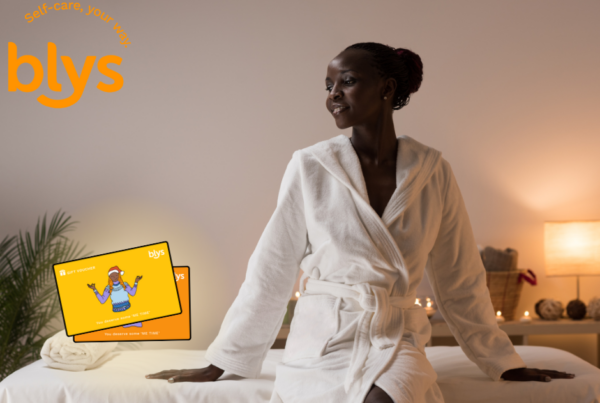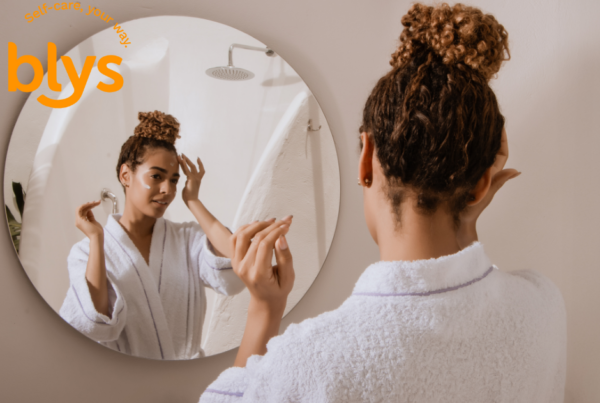Swedish massage is one of the most popular and beginner-friendly massage styles around. Known for its long, flowing strokes and gentle to moderate pressure, this technique is designed to relax the entire body while also supporting circulation, easing muscle tension, and calming the nervous system. Whether you’re feeling stressed, mentally drained, or physically sore, a Swedish massage can help bring you back into balance.
People often book a Swedish massage when they feel run down or overwhelmed but it’s not just for recovery. Many clients use it as part of their regular self-care routine to stay ahead of tension and stress. It’s also a great option if you’re new to massage, want to relax without intense pressure, or are simply looking for a moment of quiet in your busy week.
While a one-off massage can bring short-term relief, real benefits come from consistency. Making Swedish massage a regular habit based on your lifestyle and goals can improve how you feel both physically and emotionally over time.
Book your next Swedish massage without leaving home see options here and let wellness come to you on your terms.
Why Frequency Matters in Massage
Swedish massage offers more than just a relaxing hour it’s a form of body maintenance that becomes more effective with consistency. While one session can ease muscle tightness and calm the mind, those benefits tend to fade if not followed up regularly. That’s where frequency makes a real difference.
When you receive Swedish massages on a consistent basis, your body starts to respond more efficiently. Muscles recover faster, tension doesn’t build up as easily, and your nervous system learns how to stay in a calmer state for longer. Regular massages can also help you become more aware of how your body feels making it easier to spot and manage stress early.
Research backs this up. A study found that participants who had weekly Swedish massages experienced reduced cortisol levels (a key stress hormone) and increased oxytocin (which promotes relaxation and emotional balance). Another systematic review highlighted improvements in anxiety, sleep quality, and pain relief with frequent massage therapy.
Here’s what regular Swedish massage can help with:
- Lowering stress and improving mental clarity
- Easing muscle tension and improving flexibility
- Supporting healthy circulation and lymphatic flow
- Enhancing sleep quality and relaxation
- Promoting emotional balance and wellbeing
Your body responds to stress in its own way some feel it in the neck and shoulders, others in the back or jaw. By building massage into your routine, you’re giving your body a chance to reset regularly, instead of waiting for discomfort to take over.
In the next section, we’ll look at how to find the right frequency based on your lifestyle, stress levels, and wellness goals.
Factors That Affect How Often You Should Book
There’s no single answer when it comes to how often you should get a Swedish massage. Everyone’s needs are different, and what works for one person may not suit another. To find the right rhythm for your body, it helps to consider a few key factor your stress levels, daily lifestyle, health priorities, and even how much room you have in your schedule or budget. Let’s take a closer look at how each one can influence your ideal frequency.
Stress Levels
Your body absorbs stress in more ways than you might realize. Whether it’s from long hours at work, emotional fatigue, or simply juggling a busy household, ongoing stress often shows up as tension in the shoulders, headaches, poor sleep, or general fatigue.
In cases like these, weekly massages can provide essential relief, helping to reset your nervous system and reduce the long-term effects of stress. If your stress levels fluctuate or aren’t quite as intense, fortnightly sessions may be enough to maintain calm and balance.
Think of massage as a form of recovery not just physically, but mentally. If you notice signs of stress creeping in, it’s likely your body is already asking for support.
Lifestyle
How active or sedentary you are can determine how much physical tension your body holds. If you’re regularly on your feet, doing physical work, or working out several times a week, your muscles are constantly being pushed. Frequent massages weekly or after training can help with recovery, injury prevention, and improving flexibility over time.
On the other end, if you spend most of your day sitting, your body faces a different kind of strain. Desk workers often experience tightness in the lower back, shoulders, and hips due to posture and limited movement. In these cases, a massage every 2–4 weeks can work wonders for releasing built-up tension and preventing long-term discomfort.
Health Goals
Many people use Swedish massage to support specific wellness outcomes. If you’re trying to improve sleep, a weekly massage can help regulate rest cycles, reduce nighttime overthinking, and make it easier to drift off. Once you’ve established a more restful pattern, you can slowly extend the time between sessions.
For chronic pain, ongoing tension, or injury recovery, massage becomes even more valuable when combined with physiotherapy, exercise, or stretching. Frequent sessions especially in the early stages, can support mobility, reduce inflammation, and make other treatments more effective.
Having trouble sleeping? Discover how a Swedish massage promotes deeper, more restful sleep and supports relaxation.
Budget and Time Constraints
Your massage routine doesn’t have to be rigid. For some, weekly sessions fit easily into the calendar. For others, once a month is more realistic and that’s perfectly fine. Consistency is what counts most. With Blys, you can book certified mobile therapists directly to your door, giving you full control over timing, frequency, and comfort no extra commute, no stress.
General Recommendations by Goal
If you’re still unsure how often to book a Swedish massage, one way to decide is by looking at your personal goals. Whether you’re managing stress, working out regularly, or simply trying to improve sleep, each goal comes with its own massage needs. Below is a helpful guide to get you started.
Massage isn’t a one-size-fits-all solution. These suggestions are meant as general benchmarks—but it’s always best to adjust based on how your body responds and what your therapist recommends. Over time, you might find that your needs change, and that’s completely normal.
| Goal | Recommended Frequency |
| Stress management | Weekly or fortnightly, depending on intensity |
| Muscle recovery | After workouts or once per week for active bodies |
| General wellbeing | Every 3–4 weeks for ongoing maintenance |
| Chronic tension | Weekly for 4–6 weeks, then reassess with therapist |
| Sleep issues | Weekly at first, taper off as sleep improves |
For example, if you’re using massage to deal with daily stress or emotional fatigue, weekly sessions can help you stay grounded and balanced. If you’ve just started a new training program or feel sore after workouts, a weekly recovery massage may help reduce stiffness and speed up recovery.
On the other hand, if your main goal is general wellbeing or long-term health maintenance, a massage every three to four weeks is often enough to keep your body in check and prevent tension from returning.
These aren’t fixed rules but a place to begin. If you’re ever unsure, ask your Blys therapist what they recommend based on your lifestyle and how your body feels after a session.
When Should You Book Again?
One of the most common questions people have after a Swedish massage is, When should I get my next one? While your therapist might suggest a general timeframe, the most accurate answer often comes from your own body. Unlike appointments that follow a rigid schedule, massage frequency is more personal it’s about how you feel, how long the benefits last, and how quickly tension creeps back in.
Swedish massage works best when it’s part of a regular rhythm. The relaxation and muscle relief from one session can last anywhere from a few days to a few weeks, depending on your stress levels, activity, and sleep quality. As time passes, you might start to notice the difference between being relaxed and being tense again. That’s your cue to book in.
Here are some common signs that it’s time to schedule another massage:
- Stiff or tight muscles: particularly in your neck, shoulders, or back
- Trouble sleeping: or waking up feeling tired or restless
- Increased irritability: or low mental clarity throughout the day
- Recurring headaches: or tension in the jaw or forehead
- Lingering fatigue: even after rest or time off
These physical and emotional cues often return subtly, so it helps to stay mindful of them. Ignoring early signs may lead to more discomfort, disrupted sleep, or increased stress over time. The longer you delay, the more likely it is that your body will revert to its old tension patterns.
One simple and effective way to track your massage needs is by keeping a short post-massage journal. Write down how you felt right after your session, how long the sense of relief lasted, and what changed in your body or mood over the following days. This can help you identify your personal massage cycle whether it’s once a week, every two weeks, or monthly.
Massage is most beneficial when it’s proactive rather than reactive. Don’t wait until the stress builds back up.
Still deciding which style suits you best? Here’s how Swedish massage compares to deep tissue to help you choose the right fit.
How to Make Swedish Massage Part of Your Routine
While an occasional Swedish massage can offer quick relief, the real magic happens when it becomes part of your regular wellness routine. Like exercise or healthy eating, consistency is what leads to long-term benefits such as reduced stress, better sleep, and fewer aches and pains.
The good news is, you don’t need to commit to a rigid schedule. The key is to find a rhythm that fits naturally into your lifestyle and supports your body’s changing needs.
Here are a few simple tips to help you stay consistent:
- Pair massage with light stretching or yoga: Gentle movement between sessions helps maintain flexibility and prevents tension from returning too quickly. Even five to ten minutes a day can make a difference.
- Stay hydrated after each massage: Drinking plenty of water supports circulation and helps your body process the natural detox effects of massage.
- Use a calendar or phone reminder: Life gets busy, and it’s easy to forget. Set recurring reminders so you can book before tension returns.
- Keep it convenient with mobile massage: With Blys, there’s no need to travel or wait around. Therapists come to you whether you’re at home, the office, or even a hotel.
- Rebook your favorite therapist: Blys makes it easy to choose the same therapist again, giving you a more personalized experience. Over time, they’ll understand your pressure preferences, common tension areas, and massage goals.
- Treat it as essential self-care not a luxury: Your body does so much for you. Booking a massage regularly is one way to give back and stay well.
When massage becomes a part of your routine, you may notice fewer stress flare-ups, better energy, and a general sense of ease in your day-to-day life. The results build on each other session after session.
Ready for your next session? Book a Swedish relaxation massage with Blys today and feel the difference.
Special Cases: How Frequency Changes
Not everyone will follow the same massage schedule and that’s okay. Certain life stages, health conditions, or personal preferences can shift how often you may want or need a Swedish massage. In these special cases, it’s important to listen to your body, speak with the right professionals, and adjust the frequency based on comfort and goals. Below are some common examples of when and how your massage rhythm might change.
During Pregnancy
Pregnancy comes with unique physical and emotional demands. As the body adapts to support a growing baby, you may experience back pain, swelling, fatigue, and muscle strain especially in the lower back, hips, and legs. Swedish massage is a safe and effective option during this time, as long as it’s done by a trained prenatal therapist.
Most pregnant women benefit from a massage every 2 to 4 weeks, depending on the trimester, symptoms, and how the body is coping. Some women prefer more frequent sessions in the third trimester to manage increasing tension and prepare for birth.
However, it’s essential to consult your GP or obstetrician before booking, especially if you’re experiencing complications or have a high-risk pregnancy. With Blys, you can request a therapist trained in prenatal massage, so you feel safe, supported, and comfortable at every stage.
Older Adults
For seniors, massage can support circulation, mobility, joint flexibility, and overall comfort. As we age, muscles may become stiffer, and daily movement can be limited. Regular Swedish massage offers a gentle, non-invasive way to ease discomfort and promote better function.
Older adults often benefit from massages on a fortnightly or monthly basis, depending on their physical condition. Those with arthritis or chronic pain may prefer shorter, more frequent sessions, while others may use massage as a monthly tool for relaxation and general wellbeing.
Since Swedish massage uses lighter pressure, it’s well suited to ageing bodies that need care without intensity.
Couples or First-Timers
Swedish massage is an excellent option for couples or anyone trying massage for the first time. It’s not too intense, yet still deeply relaxing making it ideal for building connection or easing into a new self-care habit.
If you’re booking as a couple, a monthly session can offer a chance to relax and reconnect together. It’s also a great way to slow down in today’s fast-paced world. First-time clients might start with a one-off booking, then move to a regular schedule as they get more comfortable.
Want to try a shared session? Swedish massage for couples is a nurturing way to unwind and feel closer right from the comfort of your own home.
Consistency Beats Intensity With Blys
When it comes to massage, the most important thing isn’t how intense each session is it’s how regularly you give your body the care it needs. Swedish massage is especially well-suited for building a consistent wellness routine. Its gentle pressure, calming rhythm, and focus on relaxation make it safe and sustainable for long-term use.
How often you should book depends on several personal factors: your stress levels, lifestyle demands, activity habits, and wellness goals. Some people benefit from weekly sessions to stay balanced and pain-free, while others find a monthly massage is enough to feel recharged. The goal isn’t to follow a strict schedule, but to find a rhythm that works for you one that feels doable, affordable, and aligned with your daily life.
Making massage a part of your self-care plan doesn’t have to feel indulgent or complicated. It’s a practical way to reset your body, improve mental clarity, support better sleep, and prevent tension from getting out of hand. And with mobile therapists available through Blys, sticking to your massage routine has never been easier.
Swedish massage offers a simple but powerful way to stay well without the need for deep pressure or intense treatments. It’s gentle, effective, and easy to work into your routine.
With Blys, it’s easy to stay consistent. Book your next Swedish massage at home and keep your wellbeing on track on your schedule.






